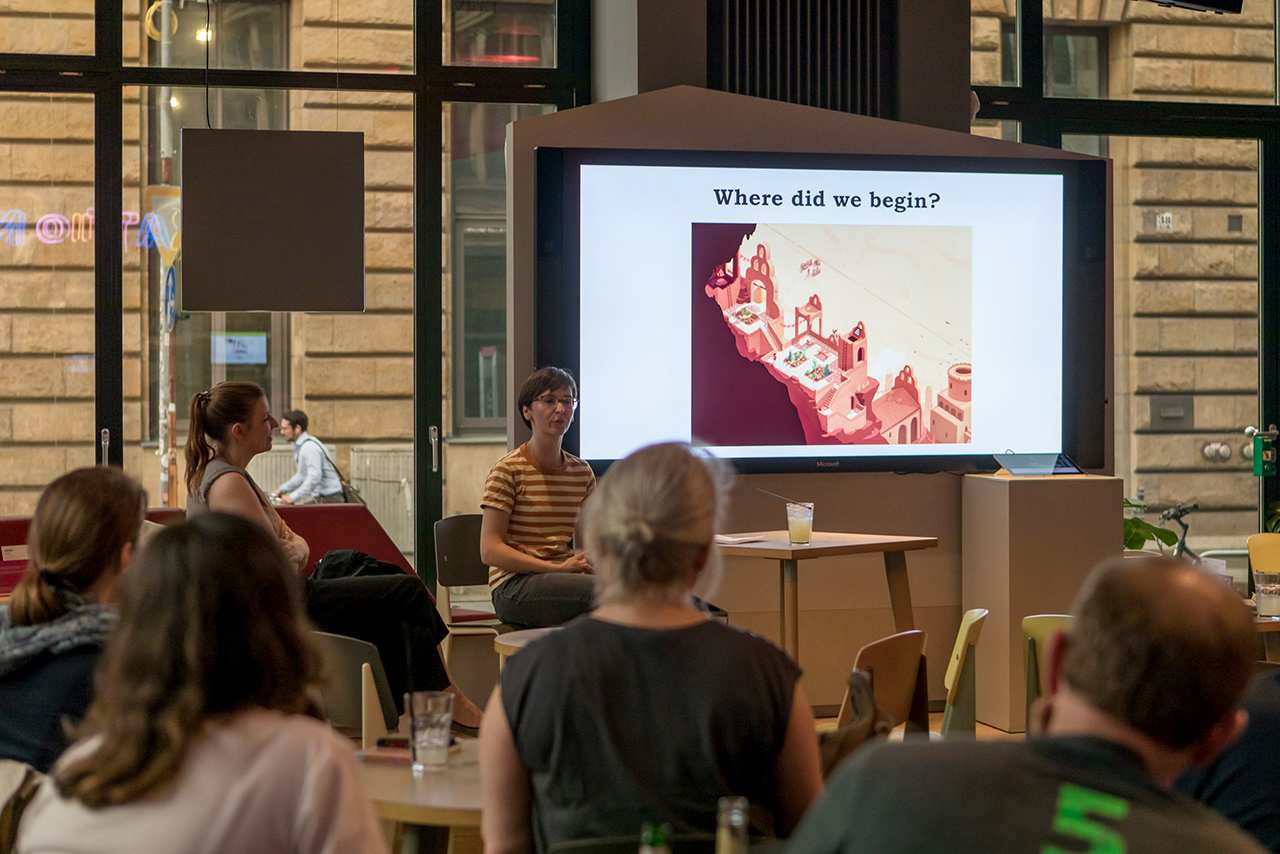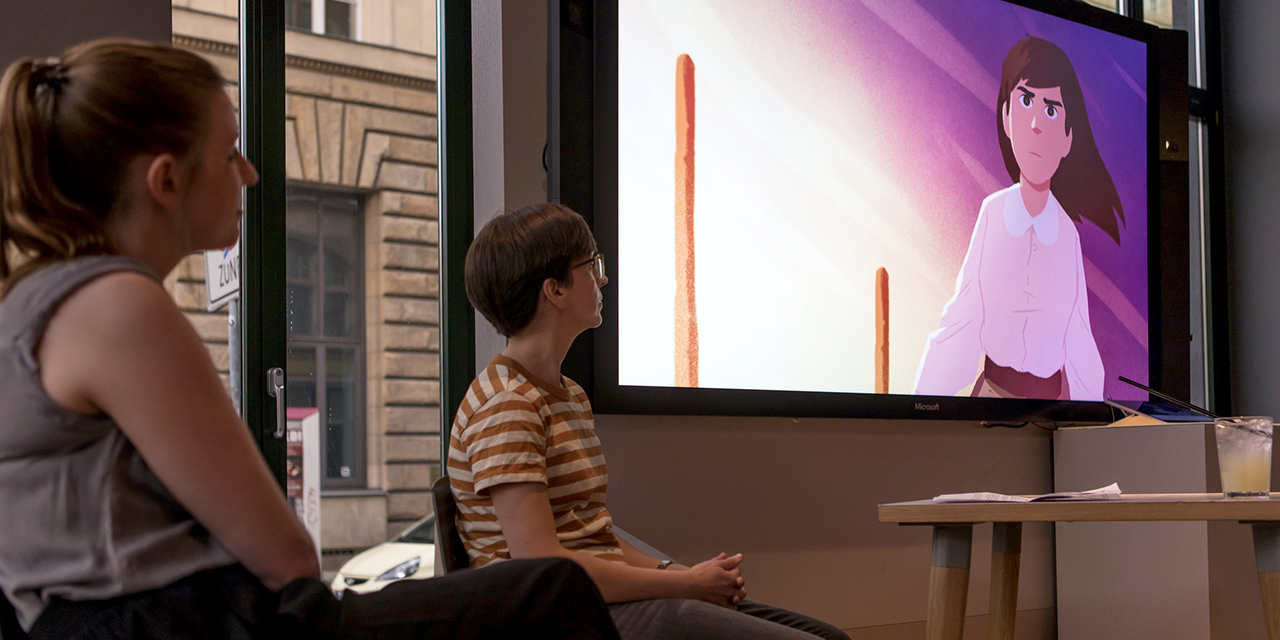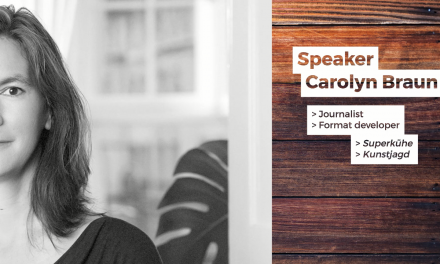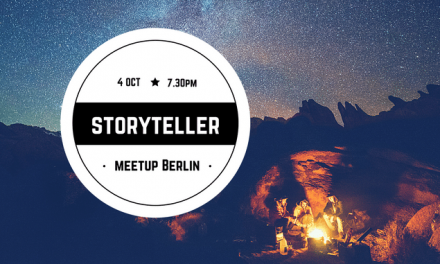On the 9th of May, we had the pleasure to feature Maria Grau-Stenzel of the Berlin based game developer Honig Studios as our speaker at StoryFusion #4. She gave us a detailed insight into the production of their upcoming game “El Hijo” with a particular focus on the storytelling in the game.
At first, Maria Grau-Stenzel offered an overview of the current state of the game which has already been in production for about 8 months. It is very much an independent game, distinguishing itself from mainstream titles with its strong cartoon aesthetics and an off-beat story, inspired by the films of Alejandro Jodorowsky and Sergio Leone. As such it eschews violent combat mechanics, opting for a stealth instead. Thus the player character, a young boy, has to sneak through a monastery in the first levels of the game, evading the supervising monks. Honig Studios aims to release the game on PC, through digital distributors such as Steam.

The first spark of inspiration for “El Hijo” (literally “the son” in Spanish) came from Alejandro Jodorowsky’s surreal western “El Topo” which featured a son travelling with his father. The influence of this movie inspired strong key visuals for the game which quickly to the development team had to transform into a compelling story.
The team quickly decided to focus on a little boy who – unlike the film that inspired it – is travelling with his mother at the beginning of the story. In a fully animated cutscene, which sets the tone of the game, the boy is committed to a monastery by his mother. Determined to be reunited with her, the boy flees the custody of the monks which sets the stage of the gameplay.
Several artistic decisions made at the beginning of the development determined how the team would approach the story. Maria Grau-Stenzel pointed out that the most important one was: “How to create emotions in a non-violent stealth game?”
The team also decided not to feature language, partly due to the complexities of producing a game in multiple languages for a worldwide audience, partly because the team was eager to find a more universal approach instead. While non-interactive cutscenes were used to set off the game, made possible through the collaboration with an Hamburg based animation studio, the team did not want to rely on these, because they interrupt the flow of the interactive gameplay.
The first step to achieve an emotional impact on the player came with the character design. Following an intricate set of design rules [some examples can be found on the website of Honig Studios] which defined the protagonist, as well as the numerous antagonists in the game, the team created a visual language of simple shapes for each character: Round, flowing forms for the little boy in a bright poncho; pointed, snappy ones in muted tones for those who pursue and threaten him.
A second, important element were strong, evocative animations which clarify the emotions the characters in the game go through: From the suspicious monks who snoop around, searching for the missing boy; to the protagonist’s careful movements as he ducks his head in the shadows. Though the interactive nature of a game like “El Hijo” also meant that the team had the unique opportunity to use the actions of the player as a means to tell small stories on the side: A pot of soup being knocked over by the player in one scene might lead to a monk being horrified by the spoiled soup in a later scene.
While developing the details of their first levels, the team made a deliberate decision to eschew the pitfalls of the most tired tropes. Maria Grau-Stenzel explained that they wanted to “keep it real”. In that regard, they decided against turning the boy’s mother into a superhero in the later part of the game. It would also have taken too much attention away from the boy. The team always aimed to tell his story after all.
Ultimately the development team was taking an iterative approach, not only to the game, but to the story as well: After developing chunks of the story, they would test them and change those parts which required it, thus constantly updating the game and its story whenever required. Maria Grau-Stenzel explained that they viewed these chunks as individual chapters within the larger story, which would ultimately come together in a large three-act structure which the team aimed for. While the focus was on a linear story at the moment, the team was interested in opening the game up to non-linear options.
At the end of her presentation Maria Grau-Stenzel also pointed out that sound design and music would – of course – also be an important part of the storytelling in the game.
Afterwards we have a lively discussion with lots of detailed questions for Maria about the development process of games in general and of “El Hijo” in particular. We were very grateful to have her with us for StoryFusion #4 and we can only recommend to keep an eye on “El Hijo” which has no release date yet, but it will not be far in the future.








Recent Comments